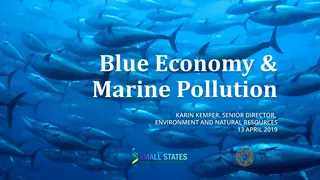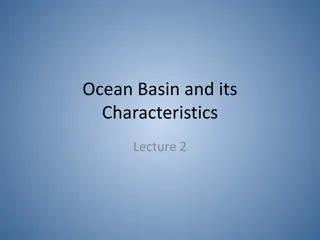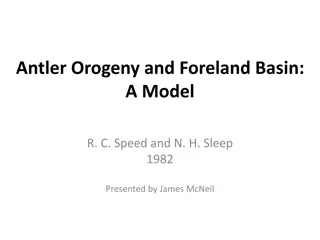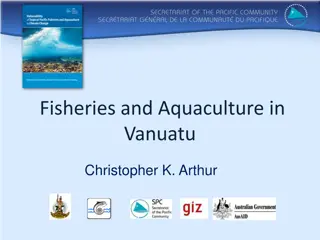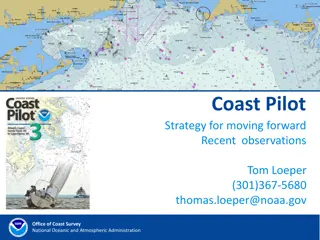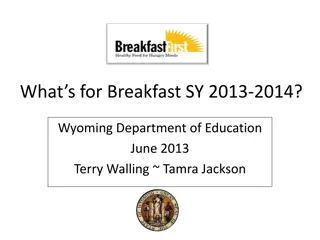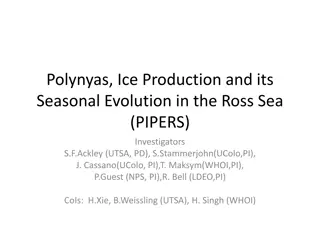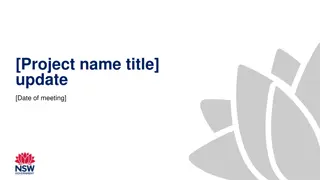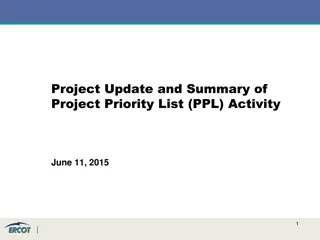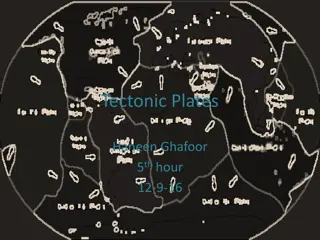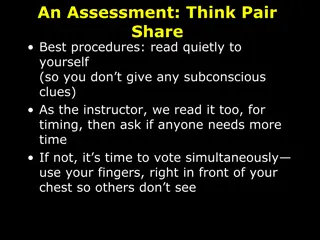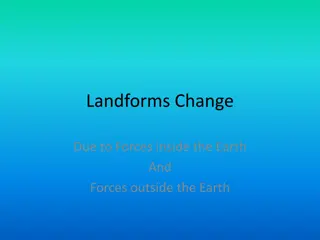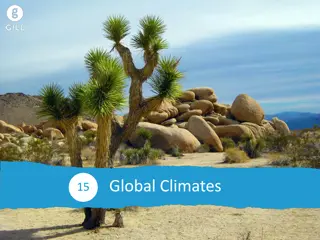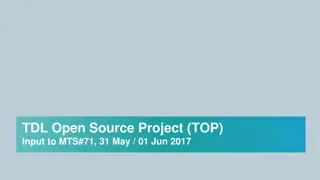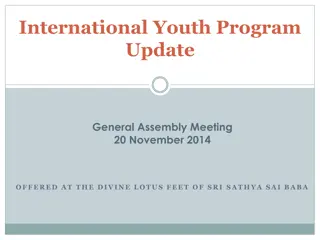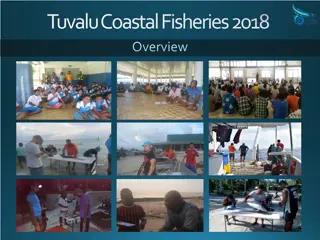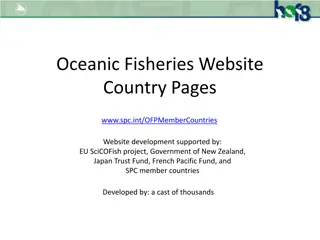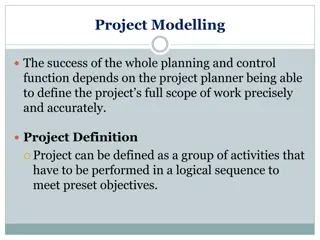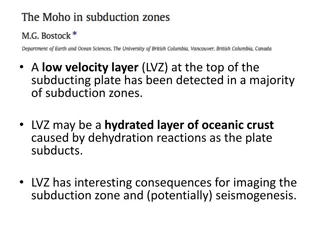SciCOFish Oceanic Component 2014 Activities and Project Highlights
The SciCOFish Oceanic Component in 2014 focused on conservation and sustainable use of coastal and oceanic fisheries resources in the PI region. The project aimed to provide scientific data and advice for effective management decision-making. Progress was made on various indicators including efforts on bigeye and yellowfin tuna, tuna discards by purse seiners, and stock assessments accepted by WCPFC. Observer coverage rates also improved to support better management practices.
Uploaded on Oct 11, 2024 | 0 Views
Download Presentation

Please find below an Image/Link to download the presentation.
The content on the website is provided AS IS for your information and personal use only. It may not be sold, licensed, or shared on other websites without obtaining consent from the author. Download presentation by click this link. If you encounter any issues during the download, it is possible that the publisher has removed the file from their server.
E N D
Presentation Transcript
SciCOFish Oceanic Component 2014 Activities and Project Highlights
Outline Project Structure & logical framework Progress against performance indicators 2014 achievements and project achievements
Logframe Structure Oceanic Fisheries Indicators 1. Effort on bigeye & yellowfin at FMSY or lower 2. Tuna discards by PS less than 1% of catch, confirmed by 100% observer coverage Overall Objective Conservation and sustainable use of coastal and oceanic fisheries resources in the PI region Project Purpose Oceanic Fisheries Indicators 1. All stock assessment results for 4 main tuna species accepted by WCPFC-SC 2. Observer coverage rates reach regionally- agreed levels by 2010, with data quality maintained To provide a reliable and improved scientific basis for management advice and decision making in oceanic and coastal fisheries Result 1 P-ACP governments, the FFA and the WCPFC are provided with scientific data, modeling, and advice to underpin their management decision making and strategic positioning 1.4 Ecosystem modelling of management and climate change 1.5 Validate Key model parameters through tagging 1.1 Observer training and system support 1.2 Integrated tuna fisheries databases 1.3 Bioeconomic modelling and national advice
Progress on Indicators Overall objective conservation and sustainable use Indicator: YFT and BET at < FMSY Longline Effort 14,000,000 Longline effort (100 hooks) 12,000,000 10,000,000 8,000,000 6,000,000 4,000,000 2,000,000 0 2000 2001 2002 2003 2004 2005 2006 2007 2008 2009 2010 2011 2012 2013 Purse Seine Effort 70,000 Purse seine effort (days) 60,000 50,000 40,000 30,000 20,000 10,000 0 2000 2001 2002 2003 2004 2005 2006 2007 2008 2009 2010 2011 2012 2013
Progress on Indicators Overall objective conservation and sustainable use Tuna discards by purse seiners in recent years approaching 1% of total catch Purse Seine Longline 6 Percentage of total tuna 5 4 discarded 3 2 1 0
Progress on Indicators Project purpose scientific basis for management All stock assessments of target tuna stocks accepted by WCPFC (skipjack, yellowfin and bigeye in 2014) Observer coverage rates reach regionally agreed levels
2014 Activities and Overall Project Highlights
1.1 Observers 2014 Observer training 6 national observer training workshops 67 observers trained, 62 certified from Cook Is, Fiji, Marshall Is, Nauru, Samoa, Solomon Is, Tonga, Tuvalu, Vanuatu Key project achievement 567 observers trained
1.1 Observers 2014 Debriefer training 5 workshops to provide introductory debriefer training 87 trainee debriefers from Fiji, Kiribati, Marshall Is, PNG, Samoa, Solomon Is, Tonga and Vanuatu 7 trainees received sufficient on-the-job training to be certified in 2014 (FSM, PNG, Solomon Is, Tuvalu) Key project achievement 239 individuals have received introductory debriefer training, 43 have completed on-the job training and are now certified debriefers
1.1 Observers 2014 Trainer training Regional Observer Trainer s Workshop 2 trainee trainers (FSM, Fiji) received attachment training at 4 observer training workshops Key project achievement 11 certified observer trainers from FSM, Kiribati, Nauru, PNG (5), Solomon Is (3)
1.2 Integrated Tuna Databases Enhanced TUFMAN software installed in 14 P-ACPs Web-based TUFMAN (logsheets) with secure login used by P-ACPs to prepare WCPFC Part 1 reports Web-based TUBS (observer data) with secure login fully operational and in use for WCPFC reporting 8th Regional Tuna Data Workshop conducted All P-ACPs submitted 2013 data to WCPFC on time
1.3 Bioeconomic Modelling & National Advice Potential TRPs for South Pacific albacore estimated through bioeconomic modelling Regional bioeconomic model covering all species/fleets operational
1.3 Bioeconomic Modelling & National Advice Potential TRPs for South Pacific albacore estimated through bioeconomic modelling Regional bioeconomic model covering all species/fleets operational Country-specific advice on FAD closures, albacore CPUE variation
1.4 Ecosystem Modelling of Management & Climate Change Web-query system operational (www.spc.int/ofp/seapodym) Further dissemination of national reports Working models for all 4 tuna species Climate change impacts estimated for SKJ, BET and SP ALB
1.5 Validate Key Model Parameters Through Tagging PTTP totals now ~400,000 releases; 73,000 recoveries (>18%) PTTP tagging data incorporated into skipjack, yellowfin and bigeye MFCL (assessment) and SEAPODYM models
Recoveries 5415 CPO (120 W to 180 ) 3311(61.1%) EPO (E of 120 W) 1607 (29.7%) WPO (W of 180 ) 497 (9.2%) CPO EPO 6692 159 (2.4%) 6533 (97.6%) 0 (0.0%) WPO 456 20 (4.4%) 0 (0.0%) 436 (95.6%)
1.5 Validate Key Model Parameters Through Tagging PTTP totals now ~400,000 releases; 73,000 recoveries (>18%) PTTP tagging data incorporated into skipjack, yellowfin and bigeye MFCL (assessment) and SEAPODYM models 2009 albacore tagging in NZ (SciCOFish funded) tag returns beginning to appear in longline fisheries



